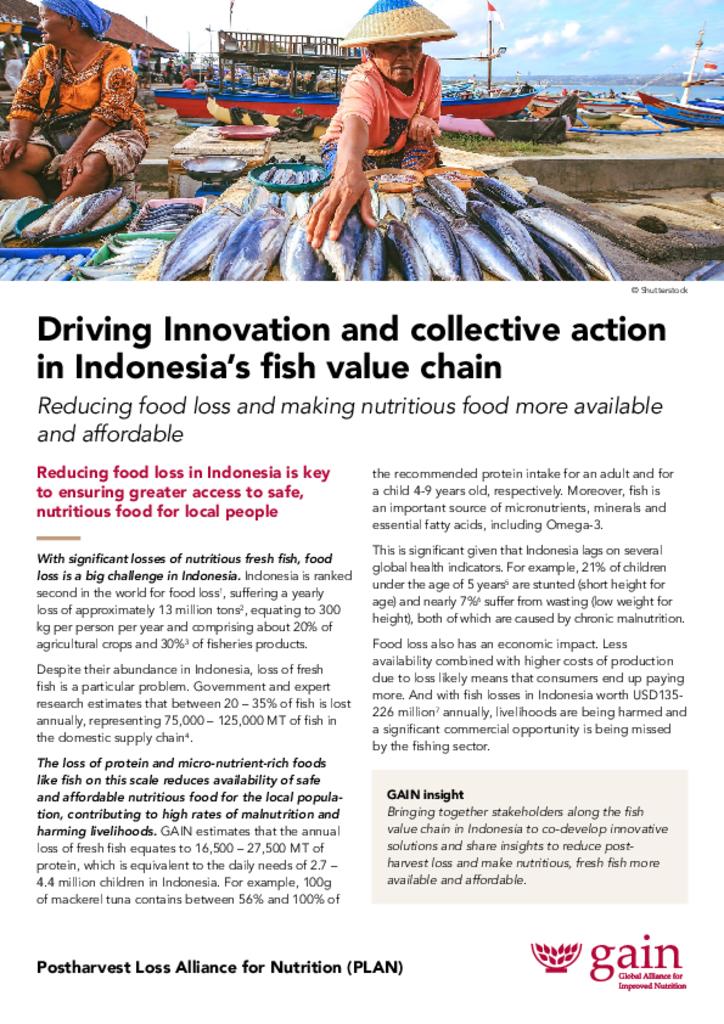Food loss is a big challenge in Indonesia, with loss of nutritious fresh fish particularly significant. Indonesia is ranked second in the world for food loss1, suffering a yearly loss of approximately 13 million tons2, equating to 300 kg per person per year and comprising about 20% of agricultural crops and 30%3 of fisheries products.
Despite their abundance in Indonesia, loss of fresh fish is a particular problem. Government and expert research estimate that between 20 – 35% of fish is lost annually, representing 75,000 – 125,000 MT of fish in the domestic supply chain4.
The loss of protein and micro-nutrient-rich foods like fish on this scale reduces the availability of safe and affordable nutritious food for the local population, contributing to high rates of malnutrition and harming livelihoods. GAIN estimates that the annual loss of fresh fish equates to 16,500 – 27,500 MT of protein, which is equivalent to the daily needs of 2.7 – 4.4 million children in Indonesia. For example, 100g of mackerel tuna contains between 56% and 100% of the recommended protein intake for an adult and for a child 4-9 years old, respectively. Moreover, fish is an important source of micronutrients, minerals and essential fatty acids, including Omega-3.
